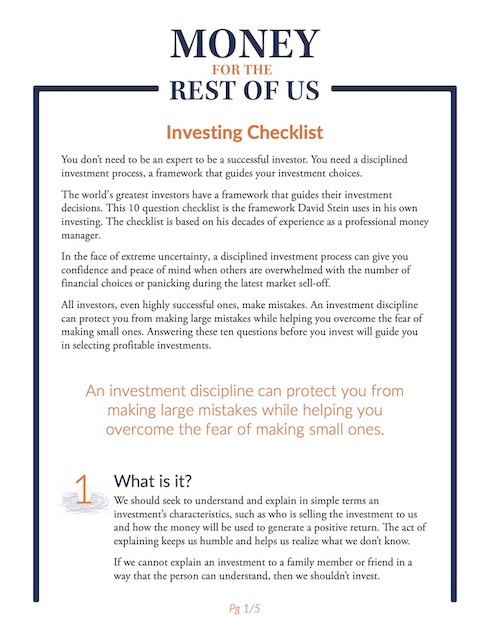Has the Federal Reserve and other central banks led you to be complacent about risk? Plus, I share an investment strategy with suprisingly good returns.
In this podcast, you’ll learn:
- Why the Federal Reserve is worried about you.
- What is a complacent investor?
- What is volatilty and how is it measured?
- How do you determine the expected range of returns for stocks or other asset classes for a given year.
- What is VIX?
- Why is volatility good?
- What is quantitative easing?
- How the Federal Reserve is compelling investors to take on more risk.
- Why non-investment grade bonds are risky.
- What do “don’t fight the fed” and “don’t fight the tape” mean, and what have been the investment returns for following the strategy.
Summary Article
Are You a Complacent Investor?
Central bankers are worried about you.
“Worried? About me?” you might ask.
Yes. Here’s a quote from the minutes of the June 2014 meeting of the U.S. Federal Reserve Open Market Committee, the central bank committee charged with setting short-term interest rates.
“Participants also discussed whether some recent trends in financial markets might suggest that investors were not appropriately taking account of risks in their investment decisions.
In particular, low implied volatility in equity, currency, and fixed-income markets as well as signs of increased risk-taking were viewed by some participants as an indication that market participants were not factoring in sufficient uncertainty about the path of the economy and monetary policy.”
Central bankers like to use ten words when two words would do, so let me translate.
They think we are being complacent.
Merriam-Webster says complacent means “marked by self-satisfaction especially when accompanied by unawareness of actual dangers or deficiencies.”
Hmm.
Evidence
What evidence is there that investors are complacent?
There’s not much volatility. Volatility measures the variability of returns for a specific investment type. In other words, how high are the highs compared to how low are the lows, and how much movement is there between the two.
High volatility is usually a sign investors are uncertain as to where markets are going. Which, of course, is what central bankers are worried about. We are too certain that all is well.
The day-to-day volatility in world stocks, U.S. bonds, currencies, and commodities are well below average and in some cases near their all-time lows according to data provided by Ned Davis Research.
Further evidence of investor complacency is the interest rate investors are willing to accept to invest in the bonds of the riskiest companies. On average, investors have required 5.6% points of additional yield over 10-year U.S. Treasury bonds to be compensated for the much higher default rates of non-investment grade bonds (sometimes called junk bonds).
Today, the average spread (or interest rate differential) between junk bonds and 10-year U.S. Treasuries is less than half the historical average or about 2.5% according to Ned Davis Research.
Is the Fed Responsible?
Why might investors be complacent?
Here is an interesting theory by James Grant, a renowned market historian and editor of Grant’s Interest Rate Observer.
“The Fed, with a remarkable lack of self-awareness, is now deploring the complacency of the capital markets, with the Fed having administered the sleeping potion.”
What? The Federal Reserve itself has lulled us into complacency? How?
The Federal Reserve has done everything in its power to keep both short-term and longer-term interest rates low.
While the Fed sets short-term interest rates directly, it has sought to influence longer-term interest rates by purchasing billions of dollars of government bonds and bonds backed by mortgages through its quantitative easing program.
The Impact of Low Rates
Low interest rates accomplish several things. They make it more attractive for businesses to borrow money to expand, and they make it more attractive for households to borrow to buy the increased output businesses produce. Low interest rates provide a strong tailwind to help the economy grow.
Low interest rates also mean rates of return on the safest investments like savings accounts, certificates of deposit (“CD’s”), and short-term government bonds are very low.
In 2007, an investor could buy a 1-year CD that yielded 3.6%. Yields on much higher risk non-investment grade bonds were over 8%. Now a 1-year CD yields less than 1% and non-investment grade bonds yield just over 5%.
The riskiest bonds today don’t yield that much more than the safest investments did 7 years ago.
Because yields on the safest investments are extremely low, investors have shifted to riskier assets like non-investment grade bonds and dividend-yielding stocks in order to generate income.
Low yields, low returns and muted day-to-day volatility does not mean stocks and non-investment grade bonds are no longer risky. If anything, they are now more risky because compensation for that risk is so much lower.
Those junk bonds that were yielding 8% in 2007 declined over 20% in 2008. Stocks also plummeted.
Volatility and losses will return again to risky assets. When? Who knows. But don’t be lulled into complacency.

